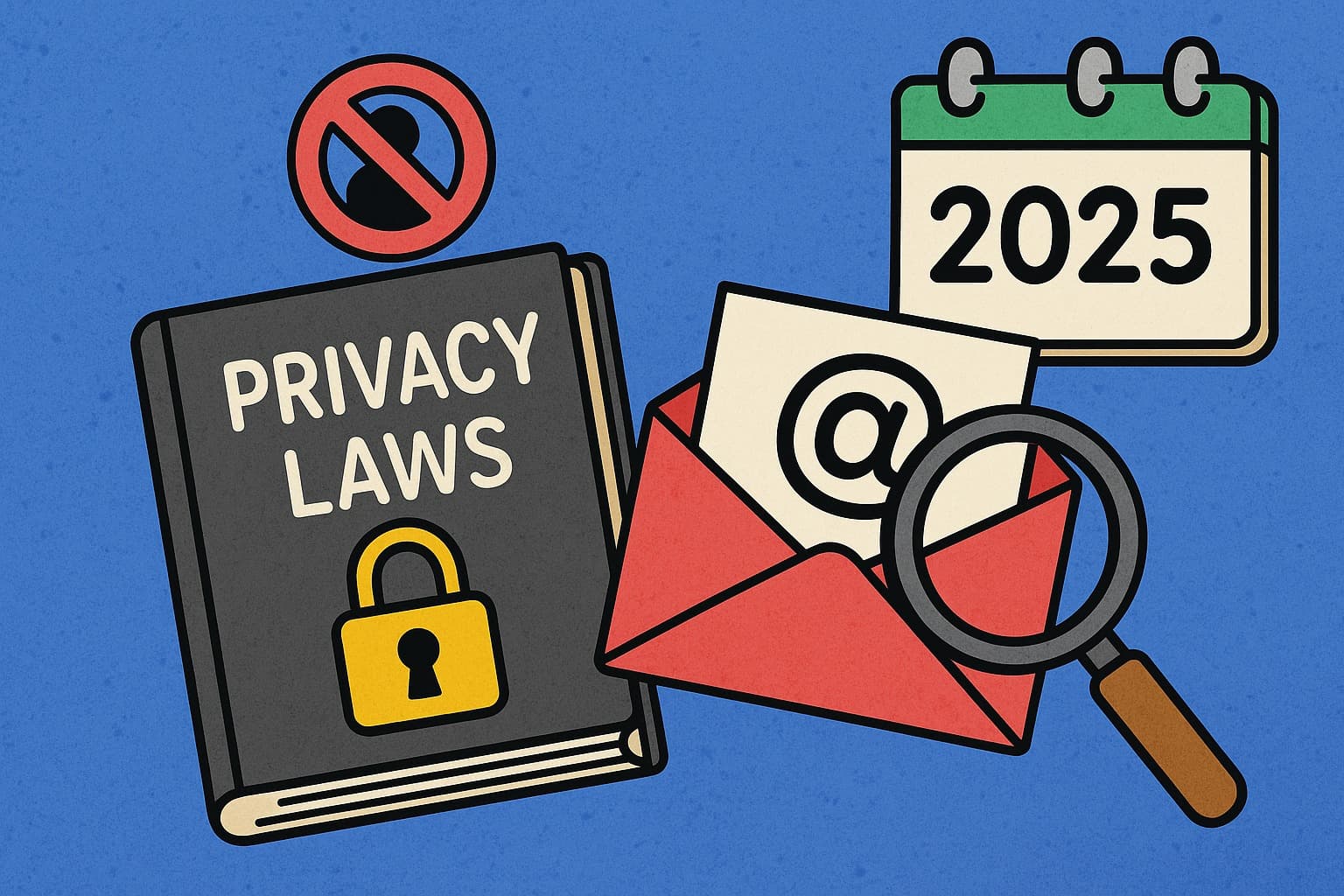The 2025 Privacy Rulebook: What New Data Laws Mean for Your Inbox

The 2025 Privacy Rulebook: What New Data Laws Mean for Your Inbox
2025 is shaping up to be the year of the privacy overhaul.
Governments across the US, EU, and beyond are tightening digital consent laws, expanding data retention limits, and redefining what “personal data” even means.
And while businesses scramble to update their compliance pages, there’s one quiet casualty in this regulatory crossfire: your inbox.
Because every time privacy laws evolve, marketers adapt — often by doubling down on more creative data collection tactics.
Let’s unpack what’s changing this year, and how a simple burner email can put you ahead of the curve.
⚖️ The Global Privacy Wave, Simplified
The alphabet soup of privacy laws keeps growing — GDPR, CCPA, DSA, ADPPA, and now a new generation of “GDPR-inspired” local frameworks in the US, Canada, and Asia.
In plain English, here’s what 2025 brings:
- Shorter consent lifespans — companies can’t assume perpetual permission to contact you.
- Stricter data minimization — they can’t collect unrelated personal info “just in case.”
- Expanded definitions of personal data — even hashed email addresses now count.
- Higher penalties for dark patterns — those sneaky newsletter checkboxes are officially illegal in several regions.
But these rules also trigger new loophole hunting — and that’s where burner emails become your personal legal shield.
🧩 The Loophole Problem: “Consent by Confusion”
Marketers know most people won’t read 30-page privacy notices.
So instead, they bury “marketing consent” inside terms of use or pre-ticked boxes that say things like:
“By continuing, you agree to receive product updates and partner offers.”
When you use your main email, every such consent stays linked to your permanent identity.
Even if you unsubscribe later, your data trail remains — sometimes indefinitely.
With burner emails, that consent chain breaks the moment you deactivate the alias.
You don’t just unsubscribe — you cease to exist in their database.
📬 The New Spam You Didn’t Expect: “Legitimate Interest” Emails
The new legal buzzword is legitimate interest.
It allows businesses to contact you without consent if they can argue that the email benefits you “reasonably.”
Translation: your inbox is about to see another wave of semi-legal spam disguised as “product notifications.”
And these are notoriously hard to stop because they technically comply with the law.
A burner address deflects that wave entirely.
When one alias starts receiving “legitimate interest” nonsense, you simply switch it off — zero confrontation, zero trace.
🕵️ The Hidden Risk: Data Brokers 2.0
As direct marketing becomes riskier under new laws, data brokers are pivoting to hashed identity graphs — cross-referencing partial email data to reconstruct user profiles.
Even if your address isn’t shown, it’s mathematically linkable through purchase histories, app usage, or loyalty programs.
But a burner email breaks this link at the root.
There’s no long-term identity to connect.
⚙️ Practical Privacy Upgrades for 2025
- Use a burner or alias for every new signup — especially freebies, trials, or whitepapers.
- Rotate aliases quarterly, mirroring consent-lifecycle norms (usually 90 days).
- Label aliases by source:
app-downloads,marketing-offers,client-tools. - Audit active subscriptions monthly; kill any alias showing activity you didn’t trigger.
- Avoid single-sign-on (SSO) with Google or Apple for privacy tools — they maintain metadata logs even when you revoke access.
💡 Bonus: How Companies Track You Even When They Can’t
Even with stricter cookie laws, marketers still use:
- Email pixel tracking — a 1×1 image to detect opens.
- Hidden fingerprinting — combining browser version + timezone + alias.
- Cross-domain tagging — linking your email with ad IDs across partner sites.
All of these depend on your real email address staying constant.
Change that variable, and the entire surveillance system collapses.
🌍 The Big Shift: Privacy Is Personal Again
2025’s data laws are a win — but enforcement takes time.
Until the ecosystem matures, your best defense isn’t legal — it’s behavioral.
Use burner emails as self-regulation by design:
- No legal letters.
- No waiting for regulators.
- Just practical anonymity, instantly applied.
🔚 Final Thought
Privacy laws can define boundaries.
But only you can enforce them.
The simplest way to stay ahead of every new rule, loophole, or breach is to shrink your digital footprint — one alias at a time.
A VPN hides where you go.
A burner email hides who you are when you get there.